After you give birth, you might notice a ‘doming’ of your stomach, especially when coming up from a lying position on your back. The slight bulge can appear above or below the belly button. You may also notice a lack of strength in your abs that used to allow you to move easily from one position to another. This ‘doming’ effect is what’s called diastasis recti or excessive inner abdominal pressure.
But what exactly is diastasis recti and how can you heal from it?
What is Diastasis Recti?
Diastasis Recti, or abdominal separation, is commonly defined as a gap of 2 centimeters or greater between the two sides of the rectus abdominis muscle. This muscle covers the front surface of the stomach. The linea alba is the connective tissue that forms the meeting point of the two sides of the rectus abdominis. All the muscles of the abdomen - transversalis, internal and external obliques, as well as rectus abdominis – meet at this center midline.
Diastasis recti is common during and following pregnancy. When you’re pregnant, your abdominal muscles stretch to accommodate your growing uterus. This causes the connective tissue to become thin. As the abdominal muscles continue to stretch, a partial or complete separation of the rectus abdominis can occur.
You might experience any of the following symptoms:
- Feelings of “flabbiness” in the stomach muscles
- Low back, pelvic, or hip pain
- Poor trunk posture
- Feeling weak through the midsection
It’s important to note that diastasis recti isn’t limited to just pregnant women. It can affect newborns, men, and sometimes occur as a result from lifting heavy weights incorrectly or performing excessive or unsafe abdominal exercises.
Here’s How to Check for Diastasis Recti
First, lie on your back and perform a slight abdominal crunch. While in this position, gently feel the midline of the rectus abdominus muscle (center of your belly). If the separation between the two halves is greater than 2 centimeters, consult with your doctor to confirm you have diastasis recti. This diagnosis then leads to a series of rehab exercises designed to treat and repair the separation.
5 Exercises to Build Abdominal Strength
Sometimes associated with a weak core, diastasis recti can lead to a lack of stability in the pelvic region and midsection. As you exercise, focus on engaging your deep core muscles to build abdominal strength. Through posture training and breathing, you can also build strength in your diaphragm, pelvic floor muscles, and lower back muscles.
The safest form of abdominal work after pregnancy is to engage the core without causing extra stress. Avoid traditional crunches, sit-ups, and planks postpartum until your abdomen is healed from diastasis recti. These exercises can make the condition worse. You should also avoid lifting or carrying heavy loads. A common mistake of new mothers is rushing back into exercise and abdominal exercise before allowing your body to be completely healed. Make sure to check with your doctor before you start an exercise program.
Here we’ve got 5 abdominal exercises that you can practice at home to help build strength and stability.
Kneeling Leg and Arm Extension
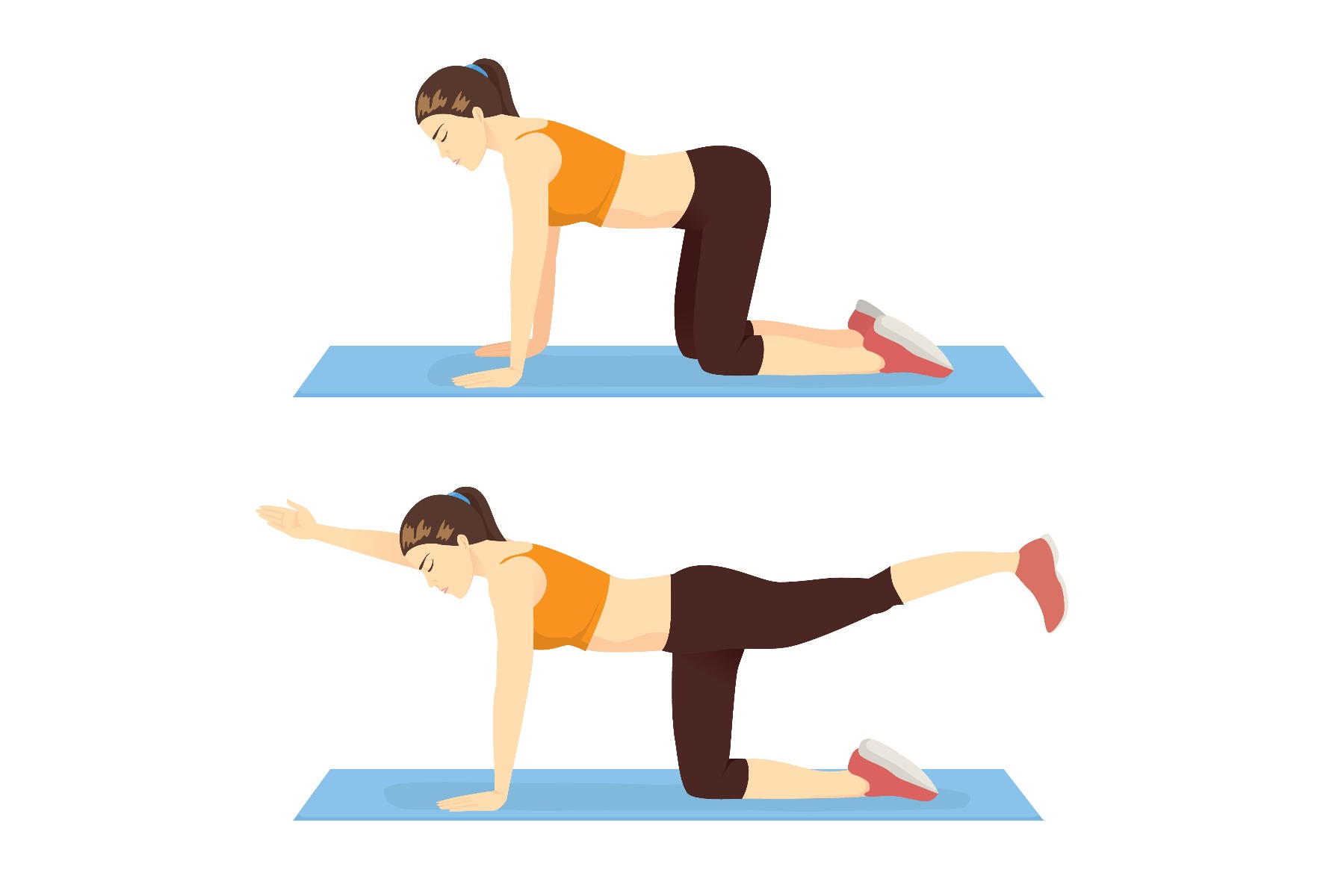
- On hands and knees, start by exhaling and drawing the core up towards the spine
- As you inhale, tighten your core. Then, reach your right arm in front of you and your left leg straight behind you
- As you exhale, tap your right elbow towards your left knee
- Hold for 2-3 seconds before lengthening the limbs with another deep inhale. Alternate between the right or left side, doing 10 reps on each side
Toe Taps Lying on Back
- While lying flat on your back, bring your legs to a tabletop position. Your knees should be directly over your hips
- Inhale into your ribcage and exhale as you tap your right foot down to the floor
- Inhale as you lift your foot and return to tabletop position. Do 10 reps on each side
Pelvic Tilt on Hands and Knees
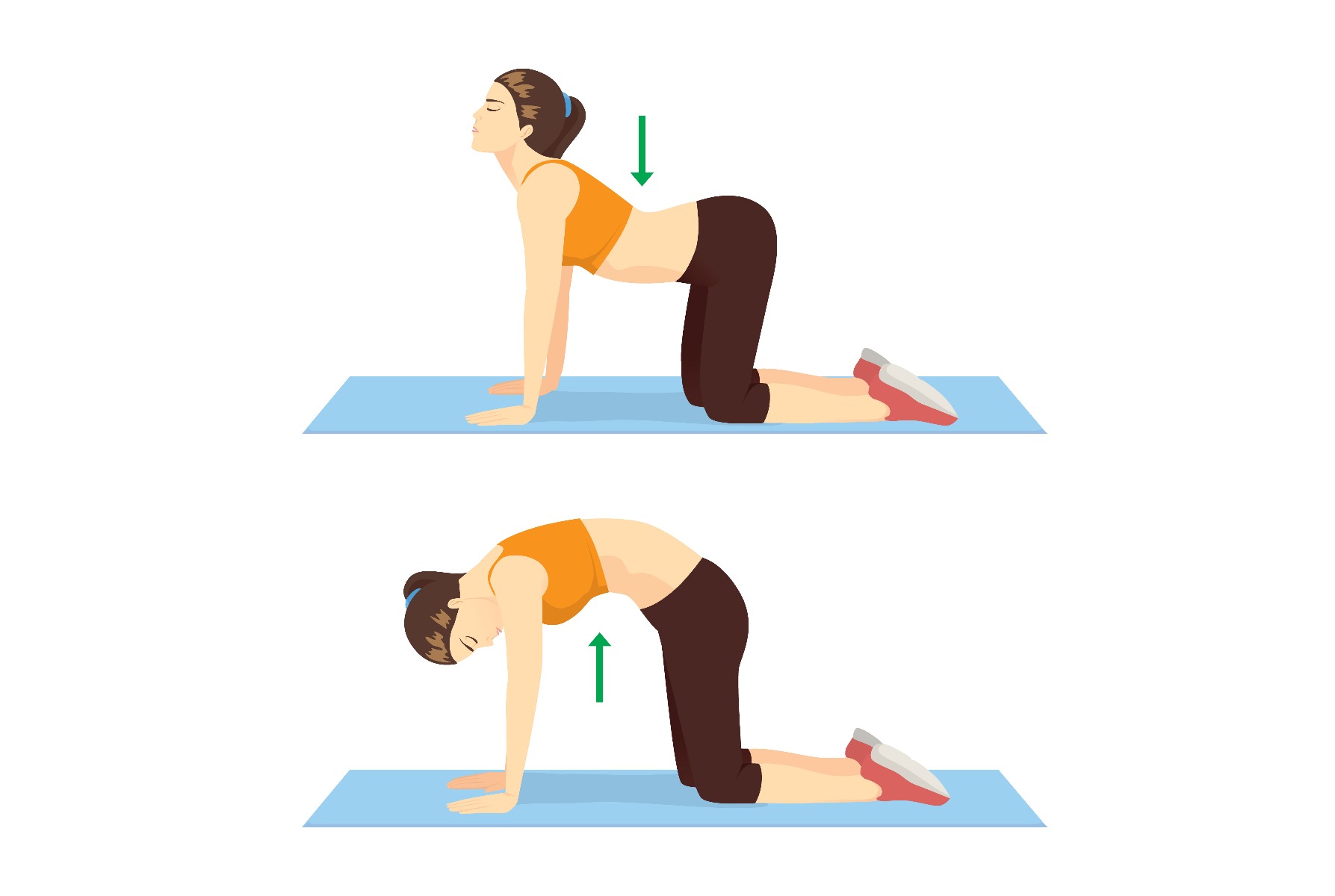
- Start on hands and knees in a neutral spine. Take a big inhale into the sides of your ribcage.
- Slowly exhale with a kegel, drawing your tailbone down and under into a curled spine. Hold for 2-3 seconds
- Inhale as you return to neutral. Slowly and consciously, do 10 tilts
Side Plank
- Place your elbow directly underneath your shoulder and stack your top leg in front of your back leg
- Make sure both feet are touching the floor and your shoulders and hips should be stacked (in line with your head and feet)
- As you hold your plank, keep breathing and drawing in your core. Don't hold for longer than 15-20 seconds to start
Double Leg Lift
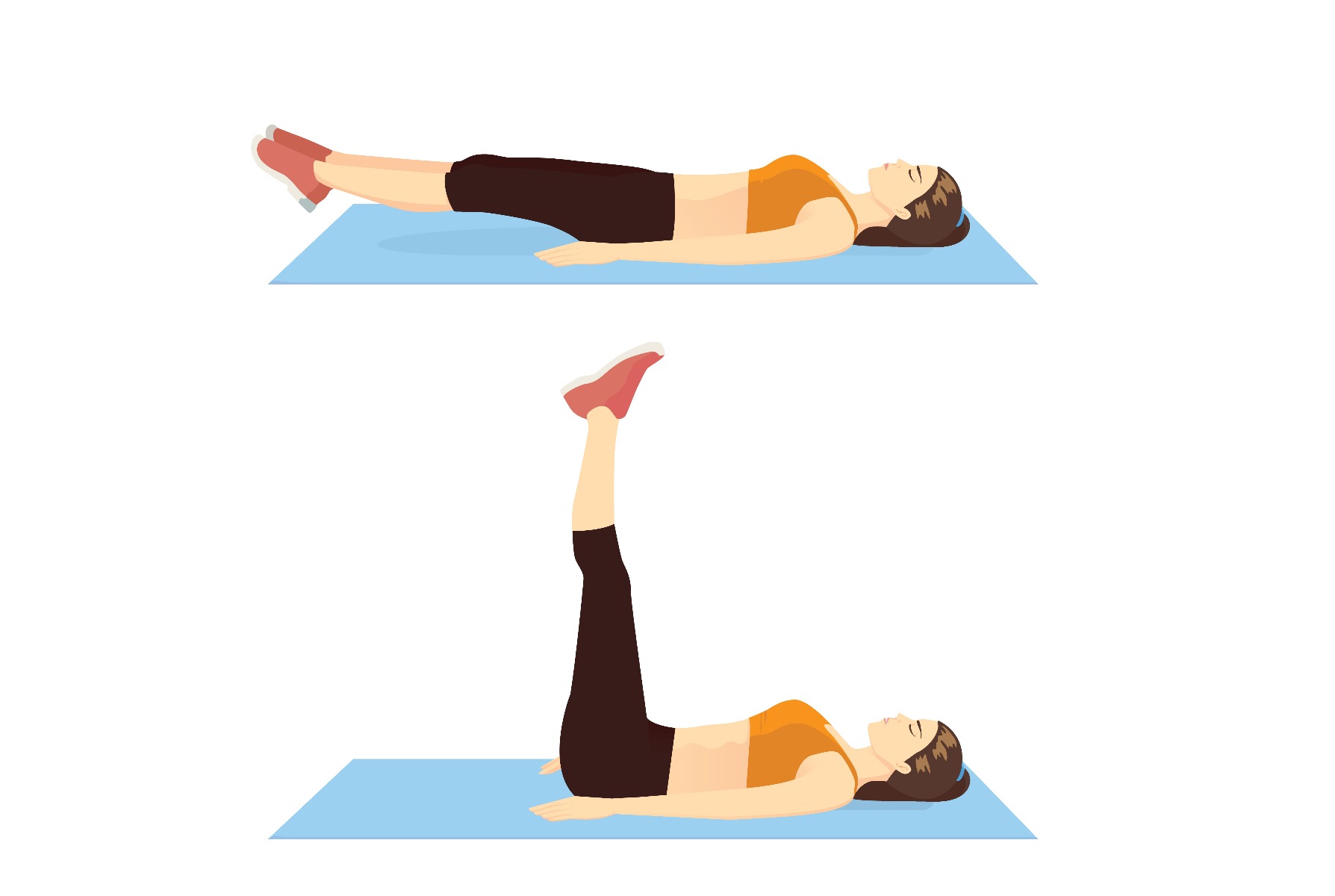
- Lying flat on the ground, extend your legs straight up toward the ceiling
- Place your arms out to your side, allowing the palms to grip the floor like you would in a push-up position
- Pressing your lower back into the ground, slowly lower both legs down toward the floor, then slowly raise them back up
Modification: Lower one leg at a time or bend knees for a shorter lever.
Make sure to consult with a doctor before beginning any exercise routine postpartum. Doctors typically recommend a basic abdominal progression at six weeks post-delivery. Focus on building stability in your core before adding weights or extending the time you exercise. For additional exercises, try this 10-minute workout!
Additional Information
To support your abdomen in the early phases of recovery, try an abdominal binder. This support garment puts the abdominal muscles in a more normal position. It may also remind you to safely use your core muscles during activities that increase pressure on the stomach.
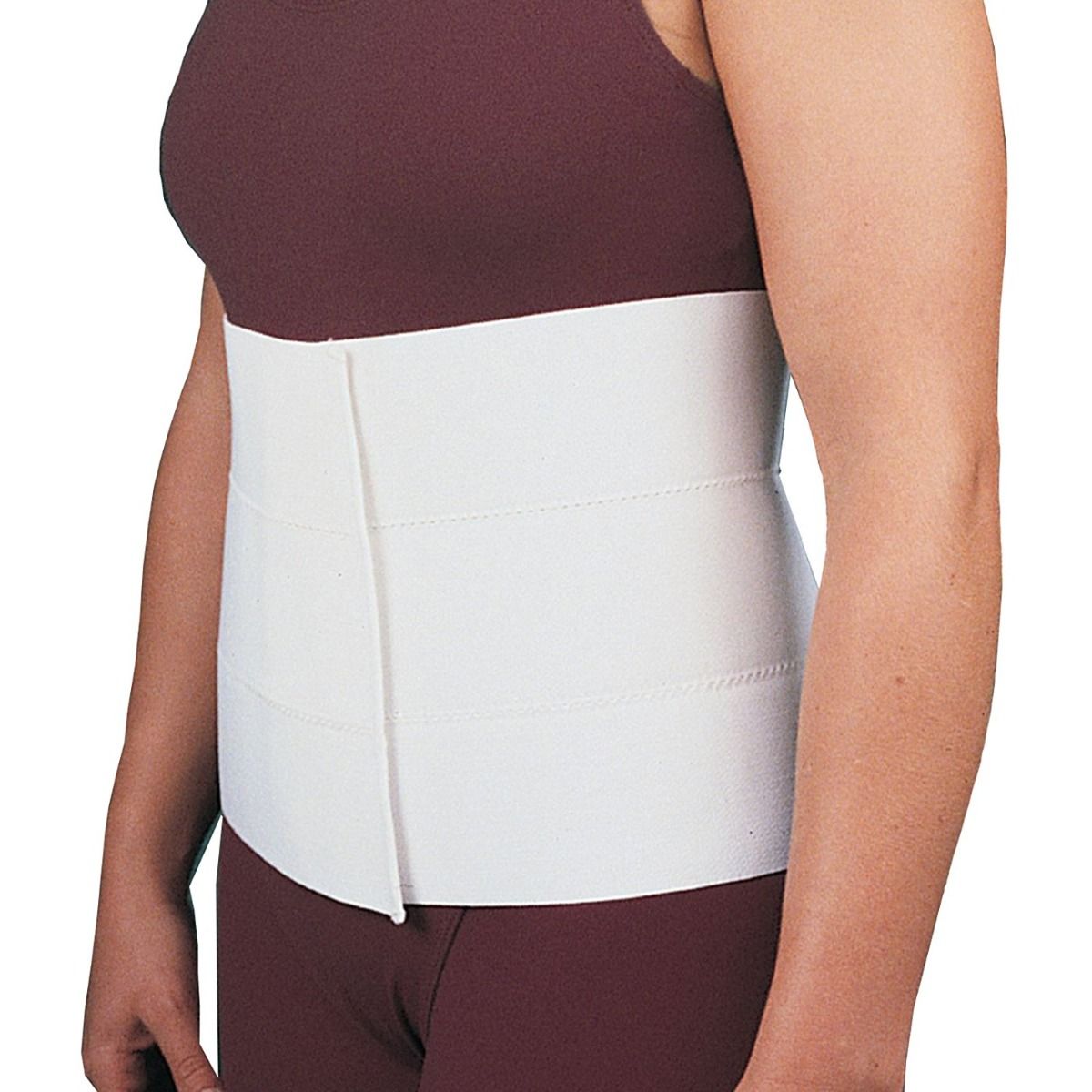
Electrical muscle stimulation can also gently activate the rectus abdominis muscles. The stimulation, contraction, and relaxation cycle created by EMS loosens muscle fibers, increases blood flow, and stimulates muscle growth. It has also been shown to reduce the amount of separation.
For women who have severe diastasis recti, or whose abdominal muscle weakness is interfering with daily activities, you may need surgery. Diastasis recti surgery is similar to a tummy tuck. It involves surgically bringing the separated muscles back together. After surgery, swelling can last for six weeks, so you will wear an abdominal binder for that time as well. Once your doctor allows you to begin exercising, check out these 6 post-operative abdominal exercises.
References
- Anonymous. (2020). Physical Therapy Guide to Diastasis Rectus Abdominis. ChoosePT. Retrieved from https://bit.ly/3nNrp7q
- Dubin, Alesandra. (2015). Diastasis Recti: The Postpartum Body Problem No One Talks About. Parents. Retrieved from https://bit.ly/3sptWI6
- Nick, Sousanis. (2019). Diastasis Recti 101: What is Diastasis Recti? Everything You Need to Know. Every Mother. Retrieved from https://bit.ly/3oNBt1y
Medical Disclaimer: The information provided on this site, including text, graphics, images and other material, are for informational purposes only and are not intended to substitute for professional medical advice, diagnosis or treatment. Always seek the advice of your physician or other healthcare professional with any questions or concerns you may have regarding your condition.

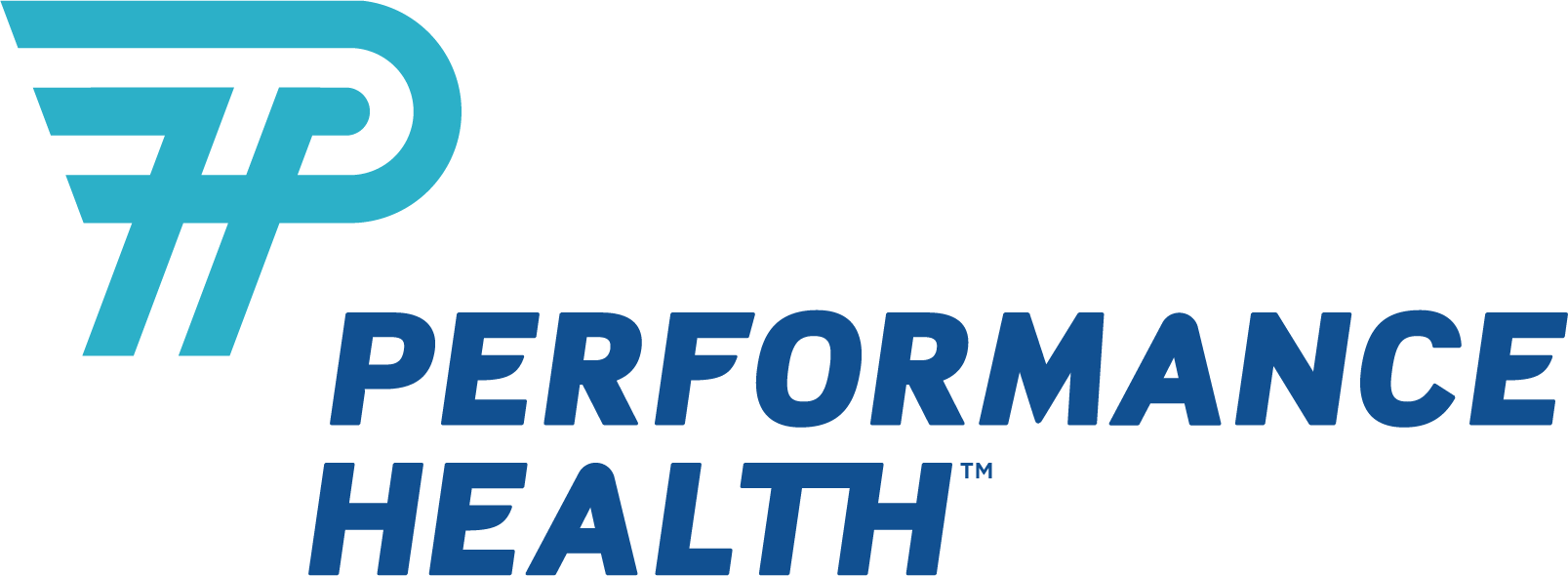






 France
France Australia
Australia


